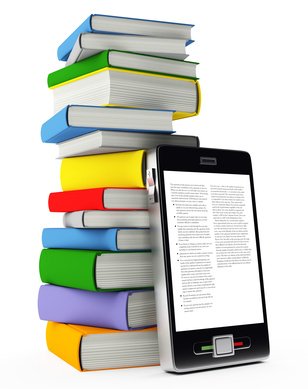Stories To Tell Books BLOG
Filtering by Category: Book Design and Book Production Technology
The Art of Book Cover Design
Nan Barnes
Why a Book Designer?
Nan Barnes
Who Should Illustrate My Children's Book?
Biff Barnes
The Look of Your Book - Design & Layout
Nan Barnes
How Many Pictures Are Too Many?
Biff Barnes
OCR: A Tool for Family Historians
Biff Barnes
Soft Cover, Hard Cover, Ebook: A Case Study
Nan Barnes
Our client, Johnna, called me with a problem. We completed her book early last year, and she published it with much fanfare, making it available on amazon.com. Her friends and family all bought copies. But then her life got busy. She has kids and a job, and her book project lost momentum. Now Johnna is looking for more and better ways to get her book out to readers. But what book, exactly? Softcover, hardcover, or ebook?
 Softcover: Johnna’s religious self-help book, Celestial Marriage: Reflections on Marriage and Faith, is currently published in softcover. In fact, amazon.com will only sell softcover books. Softcover books are affordable, and given that Johnna’s book is filled with beautiful photographs, full color printing was a must. Amazon’s CreateSpace prints color books cheaply enough that the cover price is affordable for buyers online. Authors can buy copies even cheaper, at cost, and hand-sell them. And it cost Johnna nothing to put the book up for sale on amazon; print on demand means the buyer pays the costs of printing and shipping, not the author.
Softcover: Johnna’s religious self-help book, Celestial Marriage: Reflections on Marriage and Faith, is currently published in softcover. In fact, amazon.com will only sell softcover books. Softcover books are affordable, and given that Johnna’s book is filled with beautiful photographs, full color printing was a must. Amazon’s CreateSpace prints color books cheaply enough that the cover price is affordable for buyers online. Authors can buy copies even cheaper, at cost, and hand-sell them. And it cost Johnna nothing to put the book up for sale on amazon; print on demand means the buyer pays the costs of printing and shipping, not the author.
Pros: Sell and ship through amazon, no upfront costs, authors copies are inexpensive.
Cons: Quality is low, considering softcover’s glued binding, gives the impression of a cheap, disposable paperback.
Hardcover: Johnna would love to see her beautifully designed book in a classy hardcover. This would communicate its value as a “keeper”, and would justify a higher cover price, too. Big publishers will save on hardcovers by printing thousands, using offset presses. Smaller orders from self publishers are digital, and most digital printers have a minimum order of 25 for hardcover. This means some significant money out of Johnna’s pocket. The cheapest deal we could find for her 100 page full color book was about $32 a book. That would result in an attractive book at an unattractively high cover price, so it is unlikely she could profit.
Pros: Higher quality with longer lasting binding, better paper and cover choices.
Cons: Too expensive in small qualities to sell commercially; most suitable for high end private projects.
Ebooks: Ebooks are read by more people every year, and many authors hope to reach readers who purchase books through ereading devices. And there’s the complication: which format and device? PDFs can be read by any device, but they won’t resize as an ebook will. Kindle requires their proprietary format. Apple’s iBook for iPad accepts the universal EPUB, but requires an exclusive contract. B& N’s Nook is another sales channel, but it doesn’t get as much traffic. Should Johnna pay for two or three differently formatted ebooks? How to distribute them?
Part of the answer is Johnna’s existing website. Because she is already distributing digital media, she can sell her ebook on her website. Having paid once to format it, each successive sale is pure profit. However, her site will never receive the traffic that amazon does, and since her book is already on amazon, buyers can be sent to her page, see her softcover and Kindle version, and perhaps buy both!
Pros: Inexpensive to produce, a reformat of the original book files.
Cons: Ebook prices are significantly lower; profit per book is small. Requires many sales for success.
Our conclusions: Forget the hardcover; perhaps buy a few copies for the family. Use the internet to sell and distribute both the softcover and the ebook. Offer the ebook in the common epub format on Johnna’s website, and put the Kindle version up on amazon.